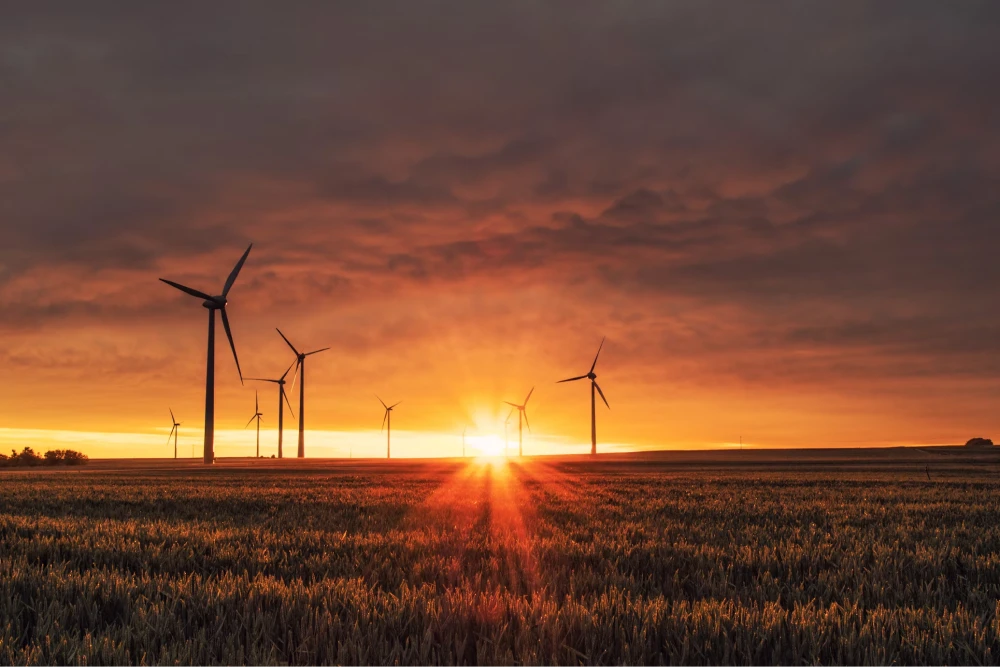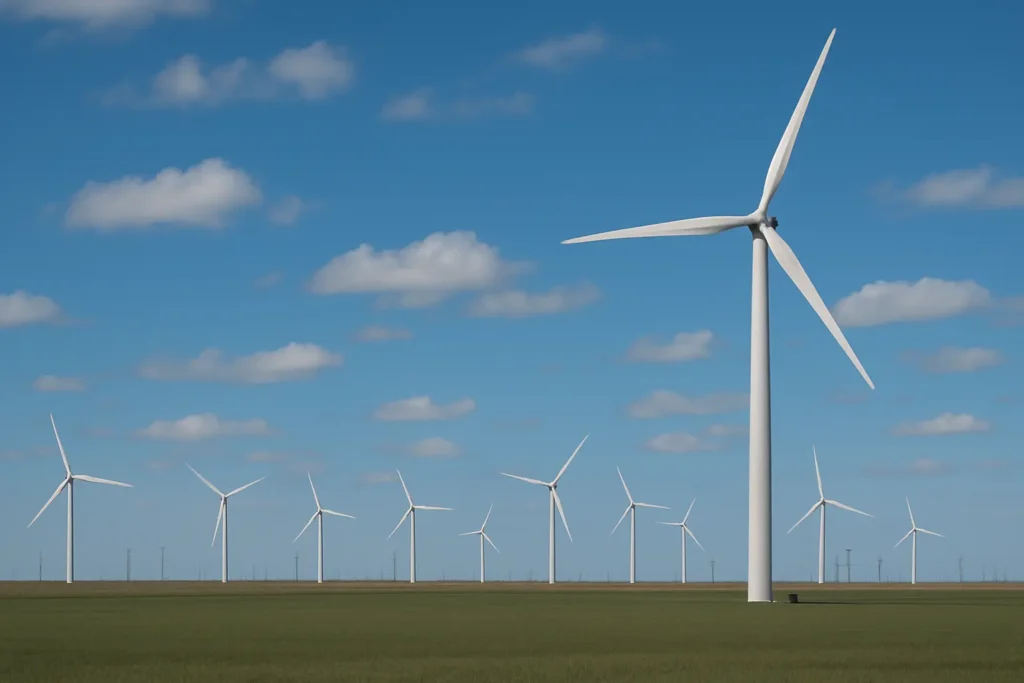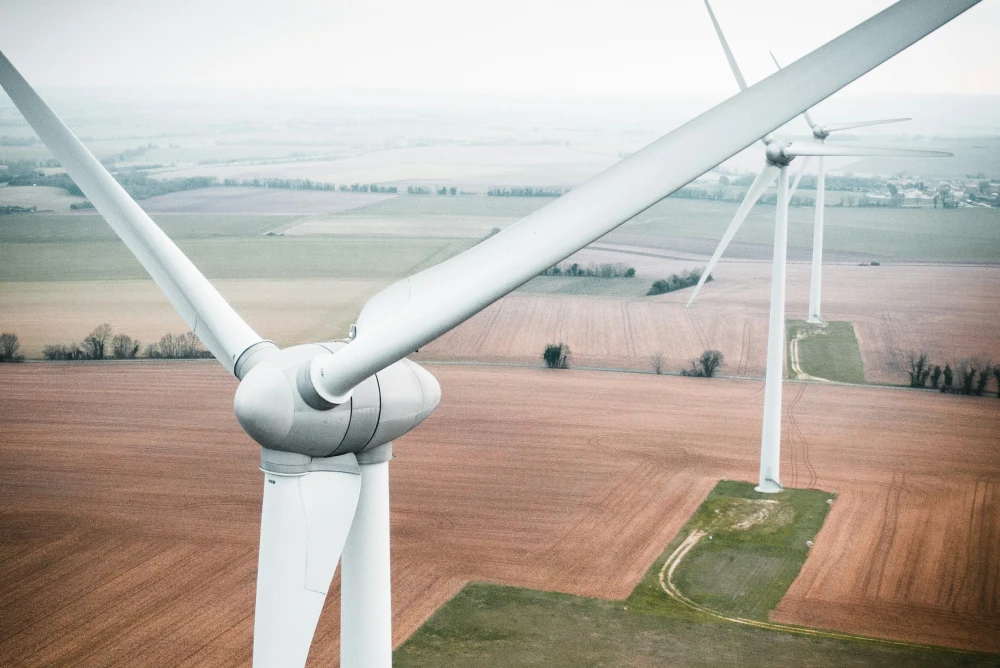The Largest Wind Farms in Texas
5 minute readDiscover how Texas dominates U.S. wind power with massive utility-scale projects.
Home > Learning Center > Energy Production > How Much Energy Does a Wind Turbine Produce?
4 minute read • Last update October 2024

Wind power accounts for about 8% of global electricity generation, and countries around the globe continue to develop and scale up their wind power generation capacity. You might be curious, how much electricity is one wind turbine capable of generating? And what can the electricity from turbine power?
There are over 70,000 utility-scale wind turbines installed in the U.S. Based on a standard capacity factor of 42%, the average turbine generates over 843,000 kWh per month. However, there’s no black-and-white answer to how much energy a wind turbine produces, as energy output varies depending on turbine type and location.
The wind industry uses two main types of turbines:
U.S. wind turbines produce about 434 billion kilowatts (kWh) of electricity a year, and it only takes an average of 26 kWh of energy to power an entire home for a day. So, based on the statistics above, utility-scale wind turbines generate enough electricity to serve 46 million American homes, with individual turbines serving between 300 and 600 homes each.
Homes that harness the power of wind energy contribute to our nation’s clean energy goals by reducing reliance on fossil fuels, which emit greenhouse gases like carbon dioxide. However, not all wind turbines for homes are large-scale. Smaller installations like rooftop, windmill, and bladeless models can generate electricity just as effectively for individual homes.
Now that we’ve established a baseline for wind turbine efficiency, it’s time to answer one of our most frequently asked questions: precisely how does a wind turbine generate electricity?
Wind turbines work by converting the kinetic energy from the wind into electricity. Here’s a quick and easy step-by-step explanation of how the wind turbine energy transformation process works:
It’s a common misconception that it needs to be windy for a turbine to produce electricity, but that’s not necessarily the case. Of course, high wind speeds yield more power, but strong winds aren’t a necessity. Even a gentle breeze is enough to make a wind turbine work and produce kinetic energy.
As with any other power source, there are several wind energy pros and cons to consider. However, wind is currently the fourth largest source of electricity generation capacity
in the U.S. According to the Energy Information Administration (EIA), wind generation hit a record high in April 2024, exceeding coal-fired generation for the first time.
Texas ranks number one nationwide for wind power capacity. The Lone Star State is home to over 16,000 wind turbines capable of producing over 39,000 megawatts of electricity for our local power plants. Texas is an obvious choice for wind power for several reasons:
The increase in sustainable electricity demand has also significantly benefited the local labor economy. Wind turbine technician roles are the fastest-growing jobs in the U.S., and demand is expected to rise by a further 45% by 2032.
If you’re looking for ways to reduce your energy bill, switching to wind power may be an attractive solution.
Utility-scale electricity generation using wind is one of the lowest-priced energy sources available. Here are a few reasons why wind turbine renewable energy often results in lower power bills for consumers:
Furthermore, wind energy’s cost competitiveness continues to improve with advances in modern wind turbine science and technology.
At BKVE, our number one goal is to help Texans save money on utility bills while working together to forge a greener future by incorporating clean energy solutions like wind turbines and solar panels.
We’re committed to offering simple, affordable electricity plans with easy-to-understand contracts without any hidden fees or usage requirements.
Enroll today to find the right plan for your household and discover the BKV difference.
Graham Lumley, Digital Marketing Manager at BKV Energy, leads digital and traditional marketing strategies, focusing on educating Texans about the state's deregulated energy market. With over 8 years of marketing experience, he creates content to help consumers understand and save on their energy bills, bringing a fresh and dynamic approach to the industry.

Discover how Texas dominates U.S. wind power with massive utility-scale projects.

There is much discussion of the benefits of wind power in the news. In this article, we want to dive
Get $50 off your electric bill!
Use code BKVEJOINUS50
Enter your zip code to shop BKV Energy's affordable, fixed-rate Texas electricity plans. Use the promo code for $50 off your electric bill.